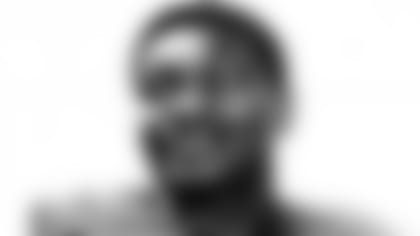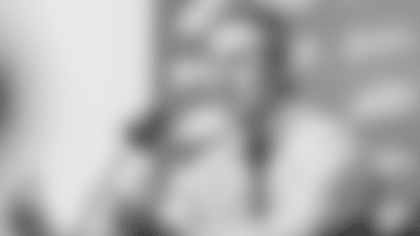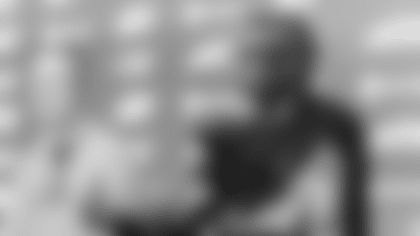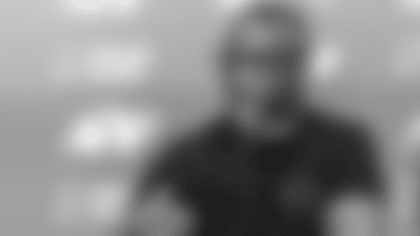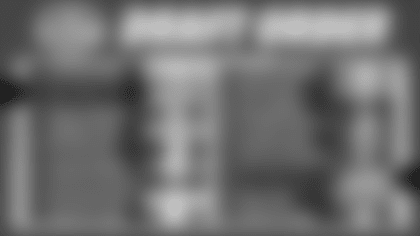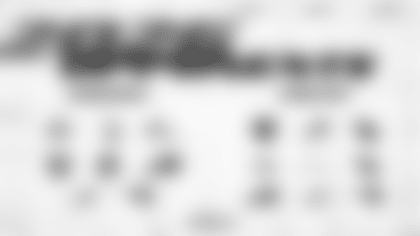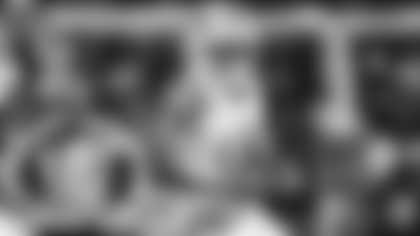RB Billy Joe
Billy Joe laughs a big laugh that you would expect an American Football League fullback and one-time world-class shotputter to be able to generate.
"Tell them I'm still alive and well and kicking," Joe, now 66, said from his Tallahassee, Fla., home. "I'm doing great, super, real fine."
Joe, who's been in a few headlines over the years, was in a few more again this week when it was announced he's being inducted into the College Football Hall of Fame. The reasons for that are for his award-winning playing career at Villanova in the early Sixties and for his game- and title-winning small-college coaching for three decades. We'll return to those exploits in a minute.
But the reason he's the subject of a story on newyorkjets.com? Many Jets fans, even those who remember immersing themselves in the rising emotions of the 1968 season, have forgotten or flat-out don't recall that Joe played a supporting role in getting the Jets to Super Bowl III.
"I was there for the most glorious era of New York Jets football," he recalled. "I was there, of course, when we beat the Colts in the Super Bowl. I was there with Joe Namath and all the other greats. We had a great time, a great organization. It was a good time to be a Jet."
Joe was at the Super Bowl, but he wasn't playing because he couldn't. He had just ended a six-week stay in two hospitals after a Raiders cheap shot tore ligaments in his left knee in Oakland.
Maybe you remember that play. Or maybe you don't. It occurred in "the Heidi Bowl," the Jets-Raiders regular-season matchup on Nov. 17, 1968, in which the Jets took a hard-earned 32-29 lead, NBC switched at 7 p.m. EST sharp to the children's movie "Heidi," and the Raiders scored two touchdowns in the final 1:05 for the 43-32 win.
In fact, Joe went down after Heidi hit the Alps and the New York airwaves.
"Oakland came back on us, and no one saw me get hurt," he recalled. "That was the last of me as a Jet. I ended up staying in the UCLA Medical Clinic for three weeks. Then they flew me back to Lenox Hill Hospital and I stayed there for three weeks. I had contracted a staph infection."
Before that play, Joe was having a productive career as a reliable pro off the bench. His best year was his rookie season with Denver — he rushed for a career-high 646 yards and was named AFL Rookie of the Year. One-year stops with Buffalo and Miami brought him to the Jets in 1967, where he backed up Matt Snell and Emerson Boozer behind Namath and averaged 4.3 yards a carry over 21 regular-season games.
After it, his playing days were over.
"Of course, Dr. [James] Nicholas operated on my knee just as he had all the other players — he was Joe Namath's doctor. He certainly mended my knee," said Joe of the Jets' longtime team physician who died last year. "The same weekend I got hurt, Gale Sayers banged his knee up. He came back the next year. He wasn't really himself but he had a great year. I came back and couldn't get it going. I had to retire, get out of the game prematurely."
Which brings us to the college portion of Joe's career, the part that will get him enshrined in the National Football Foundation's Hall in South Bend, Ind., the weekend of July 19-21.
At Villanova, Joe was named MVP of the 1961 Sun Bowl and the '62 Liberty Bowl. In the Sun Bowl, he ran into another player who would eventually become a significant Jet — Wichita State linebacker Bill Parcells also played in that game — then the 1962 Liberty Bowl.
He also was a track star for the Wildcats, winning a shotput silver medal in the '63 Pan American Games in Brazil. "As a matter of fact, I still have the school record in the shot put to this day," he said. "It was 60 feet, 6 inches. I set it in an IC4A meet in 1962."
But if people know anything about Joe, they know about his coaching. From 1972-2004 he built the programs of Cheyney State in Pennsylvania, Central State in Ohio (where he coached future Jets first-round pick Hugh Douglas) and Florida A&M.
He also fit in a stop as Dick Vermeil's running backs coach in Philadelphia, helping mold Wilbert Montgomery and the Eagles' ground game into Super Bowl-quality in the 1980 season.
His combined college record is 237-108-4, and he's second in victories among black-college coaches only to Grambling's legendary Eddie Robinson.
You might think Joe would be ready to retire, and in fact he left FAMU for a "sabbatical" after the '04 season. He's beginning to write a book about what he calls the Rattlers' "Gulf Coast offense." "People say it's a combination of the West Coast offense and the East Coast offense with a Southern drawl," he explained. He's spending more time with his family. He's traveling. He's lost 35 pounds.
But he also said that even at 66, he hasn't lost the itch.
"There's a percentage of me that still wants to coach," he said. "It's a very small percentage, but when someone offers me a job that's a good fit, that small percentage becomes a majority."



